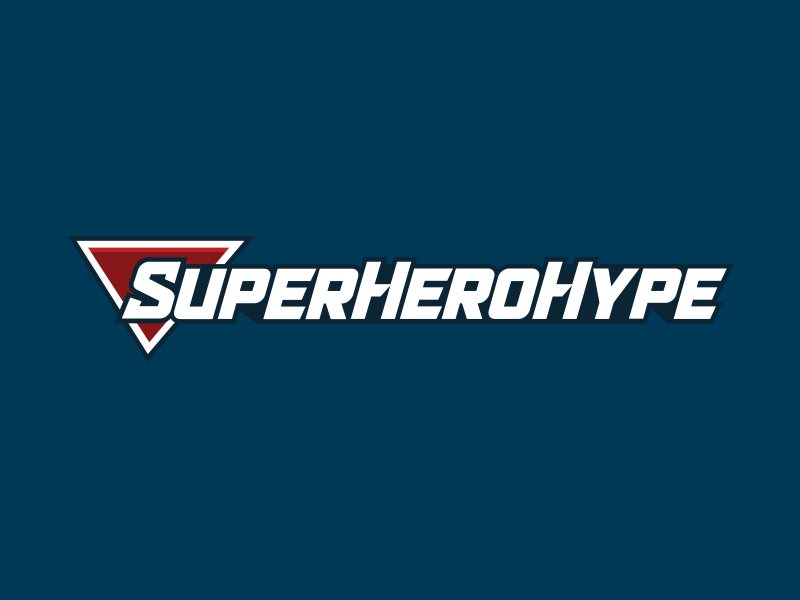Recently SHH! brought you the EXCLUSIVE on the Superman Returns ‘shield’ from Warner Bros. and fans went crazy for it! The Hype managed to track down one of the talented artists behind the shield’s 3D look, MIKE VERTA. We asked Mike a few questions via the ‘inter-web’ about his work on the Man of Steel’s upcoming return to film, as well his adventures in Hollywood as a visual effects man and his brush with the caped crusader.
SHH!: Mike, welcome to the HYPE – What is your background, how did you get started in the FX business?
Mike Verta: Well, I started out purely as a film and television composer, and visual effects was just a hobby. But shortly after I came out to Los Angeles in 1990, some opportunities came up to do visual effects professionally, and suddenly I had a second career. Eventually I opened my own post-production company, where I’ve been able to write music, do visual effects, sound design, editing, and serve as a director on a wide variety of projects for the studios, going on 12 years now.
SHH!: What got you interested in doing what you do?
Mike Verta: STAR WARS. It was the first film I ever saw – I was 5 years old – and I quite literally came out of the theater knowing I wanted to write music for the movies for a living. A few months later I began taking piano lessons. The visual effects stuff definitely came later, but it satisfies my inner geek in ways music can’t. I remember my first CG projects were all Star Wars ships just flying around in the computer; I thought that was so cool. Come to think of it, a lot of my personal CG projects are STILL Star Wars ships flying around.
SHH!: You were recently asked by Warner Bros. to work on the shield for SUPERMAN RETURNS, how did that come about?
Mike Verta: The job had fallen to Warner Bros.’ internal art department to produce some logos, and since I’ve done so much freelance stuff for them over the years, they called and asked if I could do it up in 3D. They knew the logo was going to be shiny metal of some sort, and that would’ve been difficult to draw by hand, so they opted to have me produce it in CG, with accurate reflective properties and lighting.
SHH!: What sort of input did Warner Bros & Bryan Singer have on the design of the ‘S’ shield?
Mike Verta: I didn’t design the ‘S’ – that was done by Bryan Singer and film’s production design department. I was responsible for translating it into 3D. WB sent me a jpeg of the costume torso and asked me to produce several variations on the look of the material.
SHH!: How did you create the SR shield in 3D?
Mike Verta: I began by modeling it in 3D in a package called Rhino – it was a pretty rough model, but enough for me to begin the texture and lighting work on it in Maya, while a friend of mine, Bill Tromans took the geometry to the next level. Because it was going to have reflections all over the surface, we treated it like an auto body, which meant the surfaces had to be absolutely precise in curvature continuity. It was extremely difficult, but it came out beautifully.

SHH!: What was your reaction when it was officially released?
Mike Verta: I hadn’t heard it was going to be released! I was reading posts on another board and someone posted this huge screenshot of the logo and I just about freaked. See, the work was produced under the strictest security, obviously, and I was liable for that sort of thing, so I called up WB in a panic… but of course they were completely calm on the other end of the phone saying, “Oh yeah, we released it…” but it was a rough few minutes there.
SHH!: You’ve worked on a lot of Hollywood projects over the years, what have been your most satisfying and challenging?
Mike Verta: Well, musically, I’d have to say it’s a toss-up between Batman – The Simulator Ride, and the first full-length film score I did with a live orchestra. The Batman ride was challenging because the bar had been set high, and I was required to quote the 1989 theme, (by Danny Elfman) while still composing original music around it that blended seamlessly. The film I did Forbidden Warrior – it was an epic martial-arts fantasy – required me to write 89 minutes of music in just over 6 weeks… and I was working with the same orchestra John Williams uses, with the same engineer, so I really felt a lot of pressure to do it right. Visually, the teaser trailer I did for the first Scooby-Doo movie stands out in my mind. (a spoof of the Batman) It had to be produced very quickly, and it was just me and one other guy. He would be modeling geometry in one room, while I was running back and forth between two workstations animating, editing, compositing, and working on the sound design. But I think the final product came out pretty cool… The one thing that makes all the projects I’ve worked on especially challenging is the schedule. You have to produce A-quality work on command, almost instantaneously. You learn to be fast, to develop solid first instincts, and not to let the pressure of insane deadlines get to you. Those are absolutely crucial skills to have if you want to survive in the industry. Plus, you’re competing with top-notch people in every field, so obviously you need to have your craft together.
SHH!: How does it feel that the work you did on the Superman Returns shield will now be part of the Superman mythos?
Mike Verta: Well, whether you’re a fan or not (I am), Superman is truly an American icon, so I’m very proud to be a part of it. And I’m also a fan of Bryan Singer’s work, so that’s a great pleasure as well.
SHH!: How many different designs did you do for the ‘S’ shield?
Mike Verta: I didn’t design the shield logo. I did several chrome versions, a glass version, 2 red and yellow metal versions,(one with a shiny surface and one with a more “satin” finish), 2 plastic-looking ones, and a black metal version. Those were sent to Warner Bros. for some additional paint work by Jon Sparrman before being presented to Bryan.
SHH!: Now that the Superman Returns suit has gone public what are your thoughts on the final costume?
Mike Verta: Well, I’d seen a close-up of the torso already, and I thought the material that it’s made of looked really cool, sort of like rubber dodge-balls do, with diamond-shaped indentations on it. And the shield itself has what looks like little mini “S” shaped indentations in it… very nice. Of course I could tell the color palette was different right away, and I remember thinking there’s a lot more to this Superman than just another guy in a blue suit. You have to remember that no element of a film is an island. The costume is part of the character, who’s part of the story, that’s part of the drama, and all those elements work together in very specific ways. There were some very careful decisions made about how the costume would appear, and I can’t wait to see how it all works together.
SHH!: You not only create elaborate visual effects, you are also an accomplished musician. How does music differ from visual effects?
Mike Verta: In my mind, they come from two different places, but they are essentially the same, both require composition and balance, and creative vision; both are effective in telling a dramatic story. When you work visually, you have a palette of colors to choose from; in music, you have a palette of notes and instruments to choose from. I’ve been amazed at how much I learn about music from doing visual effects, and vice-versa. They’re very similar. Perhaps that’s why the combination of music and visuals has made film such a lasting and powerful dramatic medium…
SHH!: You mentioned the BATMAN theme park ride, what was that like and what did you do?
Mike Verta: I not only wrote the music for the ride, I also did the sound design and the surround mix, which meant flying to Canada and Australia and spending 8 hours a day for 2 weeks bouncing around in simulator cabins. I won’t forget that anytime soon, I can assure you. Creatively, it’s Batman, so there was a lot of pressure to represent the legacy well, and some unusual creative challenges, like writing in the style of Elfman’s 1989 score while still creating original music and themes for the characters. But nothing beats standing in front of a 95-piece orchestra of the finest musicians on Earth and hearing your own music being played…
SHH!: One Star Wars fan to another, who shot first Han or Greedo?
Mike Verta: For the answer to these and other riveting questions, check out my site at: StarWarsLegacy.com. But for the record, Han not only shot first, but he shot Greedo in the balls.
Superhero Hype! would like to thank Mike Verta for taking the time to talk with us. You can check out Mike’s work at his website; HERE
Source: Excelsior









